Every new drug has to be rigorously tested and must pass through pre-clinical research and several “phases” of clinical trials before it can be prescribed to patients. This process can take many years from start to finish.
Pre-clinical phase
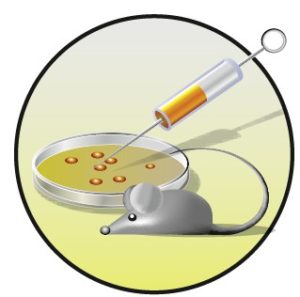 Pre-clinical (prior to the clinic) studies describe all the experiments used to discover and then test a potential drug before it is tested in humans. These experiments will investigate if the treatment kills cancer cells in the lab, if it works in mice, and how it might be expected to work in humans.
Pre-clinical (prior to the clinic) studies describe all the experiments used to discover and then test a potential drug before it is tested in humans. These experiments will investigate if the treatment kills cancer cells in the lab, if it works in mice, and how it might be expected to work in humans.
Once a treatment has passed preclinical testing it might be tested in a clinical trial. For every 10,000 new drugs studied in preclinical testing, usually only one or two are promising enough to be tested in people. Clinical trials continue this rigorous interrogation of the proposed new treatment by testing the drug against important questions, usually in three different phases.
Phase 1 – Safety. Does it Hurt?
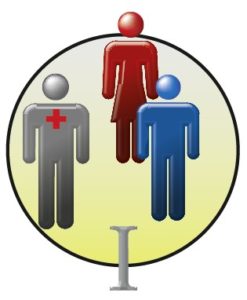 Phase 1 clinical trials, also called “first in human trials”, usually recruit a small number of patients. Often times phase 1 trials are offered to people in whom standard treatments have been tried, but these have failed. Because phase 1 trials are primarily asking the question “does the new treatment hurt anyone? is it safe?” people must still be quite well to be included in this kind of trial. This criteria often makes it very hard to get on to a phase 1 trial.
Phase 1 clinical trials, also called “first in human trials”, usually recruit a small number of patients. Often times phase 1 trials are offered to people in whom standard treatments have been tried, but these have failed. Because phase 1 trials are primarily asking the question “does the new treatment hurt anyone? is it safe?” people must still be quite well to be included in this kind of trial. This criteria often makes it very hard to get on to a phase 1 trial.
Phase 1 trials also investigate how the new treatment works in people, asking how the body breaks the drug down, how much drug is needed in each person, and if there are any side effects.
Phase 1 trials are often only offered in a few hospitals, usually a highly specialized cancer research centre.
Phase 2 – Activity. Does it Help?
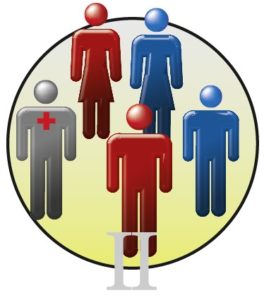 Phase 2 clinical trials test the new treatment in a larger group of patients to find out the best treatment schedule. There will usually have been a suggestion of some benefit in a phase 1 trial before a phase 2 trial is started. The main aim of a phase 2 trial is to confirm that the new treatment is truly beneficial, as well as addressing important issues such as how often to give the drug, and optimising the dose to be given. There are often between 30 to 100 patients invited to participate in a phase 2 trial, and it may occur in several trial locations. Sometimes everyone in a phase 2 trial gets the same treatment, but sometimes the dose or interval are randomised between different patients in order to answer these questions. Phase 2 trials can therefore be quite variable in how they are designed and conducted.
Phase 2 clinical trials test the new treatment in a larger group of patients to find out the best treatment schedule. There will usually have been a suggestion of some benefit in a phase 1 trial before a phase 2 trial is started. The main aim of a phase 2 trial is to confirm that the new treatment is truly beneficial, as well as addressing important issues such as how often to give the drug, and optimising the dose to be given. There are often between 30 to 100 patients invited to participate in a phase 2 trial, and it may occur in several trial locations. Sometimes everyone in a phase 2 trial gets the same treatment, but sometimes the dose or interval are randomised between different patients in order to answer these questions. Phase 2 trials can therefore be quite variable in how they are designed and conducted.
Phase 3 – Comparison: How does the treatment compare to standard care?
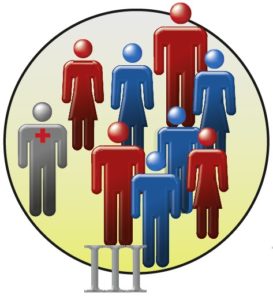 Phase 3 clinical trials are typically the most uniform clinical trials. They must answer the ultimate question — is the new treatment more effective than the standard treatment? Sometimes the difference between the new and old treatments may be small, so phase 3 trials can sometimes be very big, recruiting hundreds (rarely, thousands) of patients to take part. Phase 3 trials usually take place at several hospitals in multiple countries. Phase 3 trials are almost always randomised, often 50:50, such that patients have a 50% chance of receiving the standard treatment and a 50% chance of receiving the new treatment.
Phase 3 clinical trials are typically the most uniform clinical trials. They must answer the ultimate question — is the new treatment more effective than the standard treatment? Sometimes the difference between the new and old treatments may be small, so phase 3 trials can sometimes be very big, recruiting hundreds (rarely, thousands) of patients to take part. Phase 3 trials usually take place at several hospitals in multiple countries. Phase 3 trials are almost always randomised, often 50:50, such that patients have a 50% chance of receiving the standard treatment and a 50% chance of receiving the new treatment.
If the new treatment proves to be more beneficial than the previous “gold-standard” then the phase 3 trial is said to be “positive”. There are many examples where these clinical trials are “negative” and that is why it is so important to test these new treatments in these clinical trials: so that we do not approve something that actually isn’t better than the standard treatment. This is the culmination of often decades of work and study, and the result is reported in the news. More importantly this new treatment now becomes the new “gold-standard” and should change the practice of all doctors around the world treating that disease. If the trial is testing a new drug the company that makes the drug can then apply for approval to licence and sell the drug. Government agencies, such as the US Food and Drug Administration (FDA) or the European Medicines Agency (EMA), approve new treatments if they agree that the drug should be given to patients. Sometimes different agencies make different decisions, so in these cases a drug could be available in the USA but not in Europe, or vice versa.
Phase 4 – Real World Data Collection
 Once the new treatment is being used by patients, information is still collected about how well the treatment works in the ‘real world’ and not in the artificial setting of a clinical trial. This information also shows how the treatment works in the long term. Patients in the real-world setting often have other illnesses, take other mediations, and have real-life issues that may not have been seen in the clinical trial.
Once the new treatment is being used by patients, information is still collected about how well the treatment works in the ‘real world’ and not in the artificial setting of a clinical trial. This information also shows how the treatment works in the long term. Patients in the real-world setting often have other illnesses, take other mediations, and have real-life issues that may not have been seen in the clinical trial.
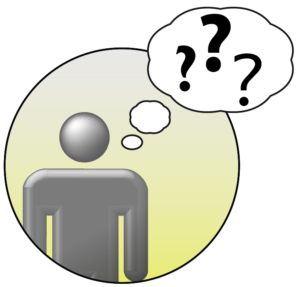 All approved cancer treatments available today have been proven in clinical trials. Clinical trials are research studies that test the idea that a new treatment or other healthcare intervention is better than the existing drug or practice. While it may be natural to assume that the new treatment is better, this may not be the case. It may be worse in terms of its effect on the cancer, its side effects, costs, or inconvenience to you. On the other hand, it might truly be better and become established as the new standard of care.
All approved cancer treatments available today have been proven in clinical trials. Clinical trials are research studies that test the idea that a new treatment or other healthcare intervention is better than the existing drug or practice. While it may be natural to assume that the new treatment is better, this may not be the case. It may be worse in terms of its effect on the cancer, its side effects, costs, or inconvenience to you. On the other hand, it might truly be better and become established as the new standard of care.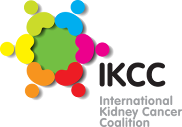
 Pre-clinical (prior to the clinic) studies describe all the experiments used to discover and then test a potential drug before it is tested in humans. These experiments will investigate if the treatment kills cancer cells in the lab, if it works in mice, and how it might be expected to work in humans.
Pre-clinical (prior to the clinic) studies describe all the experiments used to discover and then test a potential drug before it is tested in humans. These experiments will investigate if the treatment kills cancer cells in the lab, if it works in mice, and how it might be expected to work in humans. Phase 1 clinical trials, also called “first in human trials”, usually recruit a small number of patients. Often times phase 1 trials are offered to people in whom standard treatments have been tried, but these have failed. Because phase 1 trials are primarily asking the question “does the new treatment hurt anyone? is it safe?” people must still be quite well to be included in this kind of trial. This criteria often makes it very hard to get on to a phase 1 trial.
Phase 1 clinical trials, also called “first in human trials”, usually recruit a small number of patients. Often times phase 1 trials are offered to people in whom standard treatments have been tried, but these have failed. Because phase 1 trials are primarily asking the question “does the new treatment hurt anyone? is it safe?” people must still be quite well to be included in this kind of trial. This criteria often makes it very hard to get on to a phase 1 trial. Phase 2 clinical trials test the new treatment in a larger group of patients to find out the best treatment schedule. There will usually have been a suggestion of some benefit in a phase 1 trial before a phase 2 trial is started. The main aim of a phase 2 trial is to confirm that the new treatment is truly beneficial, as well as addressing important issues such as how often to give the drug, and optimising the dose to be given. There are often between 30 to 100 patients invited to participate in a phase 2 trial, and it may occur in several trial locations. Sometimes everyone in a phase 2 trial gets the same treatment, but sometimes the dose or interval are randomised between different patients in order to answer these questions. Phase 2 trials can therefore be quite variable in how they are designed and conducted.
Phase 2 clinical trials test the new treatment in a larger group of patients to find out the best treatment schedule. There will usually have been a suggestion of some benefit in a phase 1 trial before a phase 2 trial is started. The main aim of a phase 2 trial is to confirm that the new treatment is truly beneficial, as well as addressing important issues such as how often to give the drug, and optimising the dose to be given. There are often between 30 to 100 patients invited to participate in a phase 2 trial, and it may occur in several trial locations. Sometimes everyone in a phase 2 trial gets the same treatment, but sometimes the dose or interval are randomised between different patients in order to answer these questions. Phase 2 trials can therefore be quite variable in how they are designed and conducted. Phase 3 clinical trials are typically the most uniform clinical trials. They must answer the ultimate question — is the new treatment more effective than the standard treatment? Sometimes the difference between the new and old treatments may be small, so phase 3 trials can sometimes be very big, recruiting hundreds (rarely, thousands) of patients to take part. Phase 3 trials usually take place at several hospitals in multiple countries. Phase 3 trials are almost always randomised, often 50:50, such that patients have a 50% chance of receiving the standard treatment and a 50% chance of receiving the new treatment.
Phase 3 clinical trials are typically the most uniform clinical trials. They must answer the ultimate question — is the new treatment more effective than the standard treatment? Sometimes the difference between the new and old treatments may be small, so phase 3 trials can sometimes be very big, recruiting hundreds (rarely, thousands) of patients to take part. Phase 3 trials usually take place at several hospitals in multiple countries. Phase 3 trials are almost always randomised, often 50:50, such that patients have a 50% chance of receiving the standard treatment and a 50% chance of receiving the new treatment. Once the new treatment is being used by patients, information is still collected about how well the treatment works in the ‘real world’ and not in the artificial setting of a clinical trial. This information also shows how the treatment works in the long term. Patients in the real-world setting often have other illnesses, take other mediations, and have real-life issues that may not have been seen in the clinical trial.
Once the new treatment is being used by patients, information is still collected about how well the treatment works in the ‘real world’ and not in the artificial setting of a clinical trial. This information also shows how the treatment works in the long term. Patients in the real-world setting often have other illnesses, take other mediations, and have real-life issues that may not have been seen in the clinical trial.